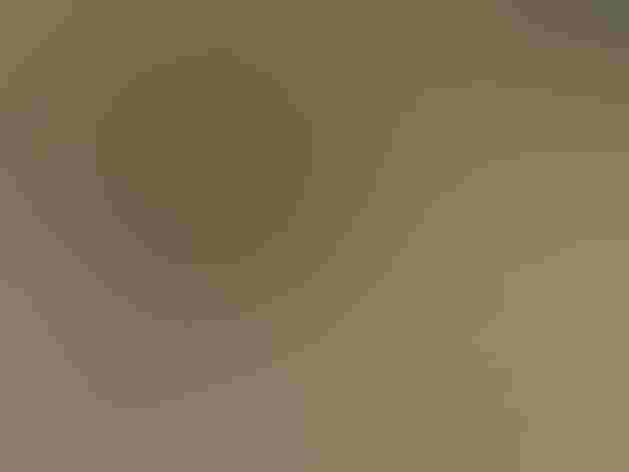Wilson’s Phalarope
At a Glance
Phalaropes reverse the usual sex roles in birds: Females are larger and more colorful than males; females take the lead in courtship, and males are left to incubate the eggs and care for the young. Wilson's Phalarope is an odd shorebird that swims and spins on prairie marshes. The other two species of phalaropes nest in the Arctic and winter at sea, but Wilson's is a bird of inland waters, nesting mostly on the northern Great Plains. Huge numbers may gather in fall on some salty lakes in the west, such as Mono Lake and Great Salt Lake, before migrating to South America.
All bird guide text and rangemaps adapted from Lives of North American Birds by Kenn Kaufman© 1996, used by permission of Houghton Mifflin Harcourt Publishing Company. All rights reserved.
Category
Sandpiper-like Birds, Sandpipers
IUCN Status
Least Concern
Habitat
Coasts and Shorelines, Fields, Meadows, and Grasslands, Freshwater Wetlands, Lakes, Ponds, and Rivers, Saltwater Wetlands
Region
Alaska and The North, California, Eastern Canada, Florida, Great Lakes, Mid Atlantic, New England, Northwest, Plains, Rocky Mountains, Southeast, Southwest, Texas, Western Canada
Behavior
Direct Flight, Rapid Wingbeats, Running, Swimming
Population
1.500.000
Range & Identification
Migration & Range Maps
Migrates in flocks. Winters mostly on salty lakes in highlands of South America, and may travel there in long nonstop flight from staging areas on lakes in western North America. Spring migration in North America is mostly through Great Plains.
Description
9" (23 cm). Spring female distinctive, with black and chestnut neck stripes, pearly crown. Male duller. Fall adults pale gray and white, with gray or yellowish legs; note actions plus thin, straight bill. Longer bill and fainter face patch than on other fall phalaropes. Juvenile looks scaly brown above at first; compare to sandpipers.
Size
About the size of a Robin
Color
Black, Gray, Red, White
Wing Shape
Pointed, Tapered
Tail Shape
Rounded, Short, Square-tipped, Wedge-shaped
Songs and Calls
A soft quoit-quoit-quoit.
Call Pattern
Flat
Call Type
Chirp/Chip, Odd, Rattle, Raucous, Scream
Habitat
Shallow prairie lakes, fresh marshes, mudflats; in migration, also salt marshes. Nests mostly at shallow fresh-water marshes in open country. In migration, may stop at ponds, coastal marshes, sewage treatment plants, but biggest concentrations are at salty or alkaline lakes. Winters mostly on salty lakes in South America.
Sign up for Audubon's newsletter to learn more about birds like the Wilson's Phalarope
Behavior
Eggs
4, sometimes 3. Buff, blotched with brown. Incubation is by male only, 18-27 days, usually about 23 days.
Young
Downy young leave nest within a day after hatching. Male tends young and broods them while they are small, but young find all their own food. Male may try to lure predators away from nest or young by performing broken-wing act. Age of young at first flight and age at independence unknown.
Feeding Behavior
Forages mostly while swimming (but does more walking on shore than other phalaropes). Picks up small items from surface of water, sometimes probes in soft mud. Sometimes stands still and catches flying insects; rarely pursues insects in the air.
Diet
Mostly aquatic insects and crustaceans. Eats a variety of flies and their larvae, beetles, true bugs, and other insects, mainly aquatic species. Also eats shrimp, copepods, seeds of marsh plants. During autumn and winter on salty lakes, may feed mostly on brine shrimp and brine flies.
Nesting
Females compete for males; one female may mate with more than one male during the season, leaving each of her mates to care for a set of eggs. In courtship, female stretches neck, puffs out neck feathers, makes chugging call. Nest site is usually on ground near water, sometimes a couple of inches above ground in marsh plants. Typical nest is shallow depression with slight lining of grass. Female may take the lead in choosing nest site, but male finishes nest.
Conservation
Conservation Status
Has lost many nesting areas owing to draining of prairie marshes, but still numerous. Protection of staging areas for migrants (such as Mono Lake, California) is important for survival.
Climate Threats Facing the Wilson's Phalarope
Choose a temperature scenario below to see which threats will affect this species as warming increases. The same climate change-driven threats that put birds at risk will affect other wildlife and people, too.
















